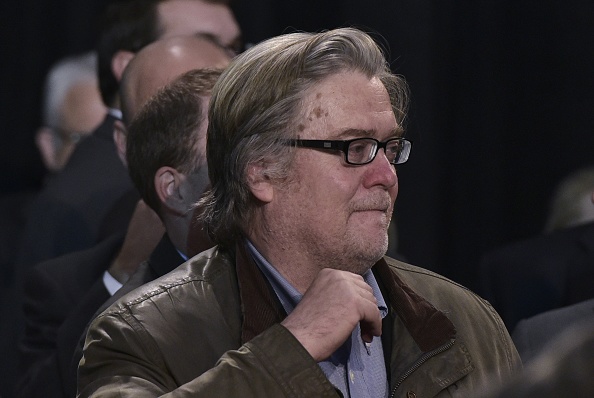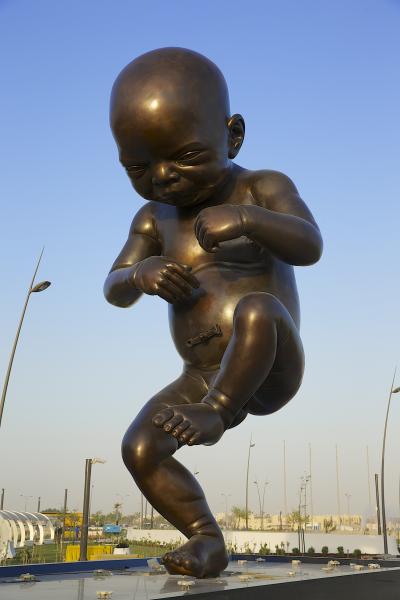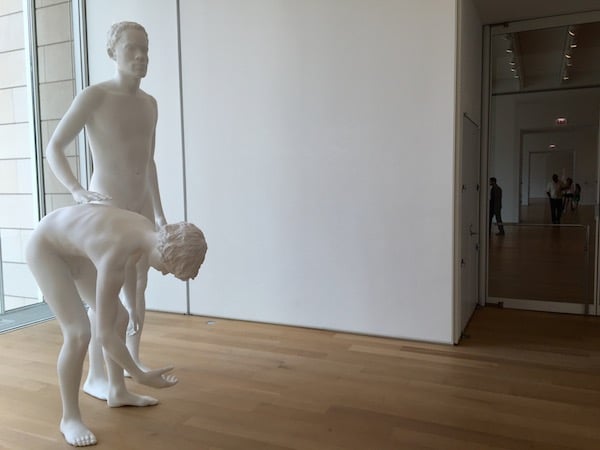Art World
What the Art World Looks Like to Trump Strategist Stephen Bannon
Get ready to feel the hate.

Get ready to feel the hate.

Ben Davis

Stephen Bannon is going to be the official svengali of the Donald Trump White House. In the days since the announcement, a furious campaign has demanded that Republicans drop the former editor of the salacious, far-right website Breitbart News, a site adored by white nationalists.
Breitbart is known for headlines like “Hoist It High and Proud: The Confederate Flag Proclaims a Glorious Heritage,” published shortly after Dylann Roof’s massacre at a black church in Charleston, when even Walmart was reconsidering the Confederate Flag as a symbol of white supremacy, and the charming “Europe’s Rape Epidemic: Western Women Will Be Sacrificed at the Alter of Mass Migration.”
For a glimpse into Bannon’s mind, I highly recommend the Buzzfeed transcript of his 2014 address to a conference at the Vatican, in which the former Goldman Sachs exec depicts himself as a thought leader in a global uprising against corrupt government and capitalism unmoored from its traditional “Judeo-Christian values.” He poses Breitbart as sticking up for the little guy crushed by elite “globalism,” animated by an urgent need to organize in a clash of civilizations with “jihadist Islamic fascism.”
This war-like view of the world has justified Breitbart News’s particularly bellicose rhetoric and outrage-at-any-cost tactics. (Milo Yiannopoulos, a major part of the trollish “#DaddyWillSaveUs” pro-Trump art show earlier this year, is Breitbart’s most famous writer).
According to the Washington Post, “[t]here is talk of more Breitbart reporters joining Bannon at the White House, in roles that do not require Senate confirmation.” My colleague Christian Viveros-Fauné has already predicted a fresh “culture war” on the horizon with the ascent of Trump, so I thought it would be worth looking through the Breitbart archives during the Bannon years (2012-2016) for hints of what’s in store.
The main and obvious point to make is that Breitbart does not have much use for art on its own; its coverage mostly is subordinated under its “Big Hollywood” vertical, focusing on the scourges of pop culture. Correspondingly, the site mainly stands out for the opportunistic gusto with which artists and artworks are treated as ideological props.

One of the sculptures from Damien Hirst’s The Miraculous Journey. Image courtesy Qatar Museums.
The most noteworthy example of art-as-prop might be the November 1, 2013 piece “Is Artist Damien Hirst’s New Work Pro-Life?” It takes the British artist’s series of massive sculptures titled The Miraculous Journey in Qatar, depicting the stages of fetal development, and speculates about what it might symbolize in the battle against abortion rights.
“Hirst’s work is purposely done to shock the sensibility of the viewer and make them think more about what they think they know,” the post speculates. “I have no idea what Hirst’s view on abortion is, but in Qatar abortion is punishable by jail and deportation.”
(Cruder attempts to draft artists, like the assertion that Tracey Emin “reportedly voted for two Republican candidates in past elections”—which would be a real feat considering she’s British and lives in London—can probably just be chalked up to sloppiness.)

Photo of Huck & Jim at the Art Institute of Chicago. Image: Ben Davis.
Perhaps it seems surprising that Breitbart would concern itself with the minor controversy on the Whitney’s decision to not go through with a Charles Ray commission of a giant-sized sculpture of Mark Twain’s Huck & Jim for its new building. Indeed, it is not at all clear where author William Bigelow stands on the matter. The post is mainly an excuse to mock art critic Jerry Saltz as an example of liberalism’s obsession with “leftist race memes.” (Fun fact: the picture Breitbart uses here is by me, snipped from my artnet review of the Ray show at the Art Institute of Chicago.)
Baiting the art world about immigration is a frequent theme, for instance with “Museum Under Fire for Charging Attendees and Their Dogs, But Letting Migrants in for Free” and “’Migrants Ruined my Feminist Sculpture,’ Says London Artist.” (Despite those quotation marks, Russian artist Dashi Namdakov didn’t say anything of the kind, nor is his sculpture, which depicts a mythical creature, specifically “feminist,” as far as I can tell.)

Ai Weiwei visits the Idomeni refugee camp, on the border of Greece and Macedonia, on March 11, 2016. Photo: Matt Cardy/Getty Images.
A post on Ai Weiwei’s recent consciousness-raising pilgrimage to Greek refugee camps concludes by framing him as an avatar of an out-of-touch globalist elite: “It has not been reported that Mr. Waiwai [sic] has distributed any of his massive personal wealth to migrants or taken any into his own home.” (He did arrange to have 10 percent of the take from his show at the Museum of Cycladic Art in Athens go to refugee causes.)
Breitbart has continued to promote Draw Mohammed Day, a deliberate attempt to antagonize Muslims. In May of this year, Bannon himself did an interview with notoriously Islamaphobic commentator Pamela Geller on the anniversary of a failed attack on her “Mohammed Art Show” in Texas. (Incidentally, before he announced his candidacy, Donald Trump was not a fan of Geller’s curatorial endeavors, tweeting: “The U.S. has enough problems without publicity seekers going out and openly mocking religion in order to provoke attacks and death. BE SMART.”)
Mainly, though, dozens of stories fit the “artists as clown” template: “Israeli Police to Investigate Artist Who Put Flag in His Behind at ‘Haaretz’ Conference,” “Artist on Trial for Attaching Rooster to His Genitals,” “Artist Beaten Severely by Security After Exhibiting Gun Sculpture With Penis Bullets,” etc.
There is precious little that is positive here, and it is all presented in an alt-right fun-house mirror.
The closest I can find to a positive account of what art might be comes from self-described conservative artist Frances Byrd, who published several articles for Breitbart in 2013. She expresses dislike for “modern and abstract art,” and says that her paintings of the Statue of Liberty, the Constitution, and illustrations of the teachings of Saul Alinsky embodied in an evil crow are viewed as “ignorant” by intellectuals.
In “Conservative Artists Should Stick It to the (Liberal) Man,” Byrd makes an appeal:
What do we do to change this one-sided cultural exchange? We get involved! If you’re an artist, start networking and supporting openly conservative artists. If you’re a collector, start seeking out conservative art. This doesn’t mean everything you create or buy should beat you over the head with religion or patriotism. Just make an effort to know enough about the art and its creator to actively support someone who shares your ideas. Some high-profile examples are Charlie Daniels, John [sic] McNaughton and Jon Voight.
Even this has the ring of organizing for a fight, though Byrd’s chosen cultural vanguard seems pretty unlikely.
“Turn on the hate” is a phrase now widely associated with Stephen Bannon’s strategy in the political arena. Seemingly, and probably unsurprisingly, it characterizes his approach to art as well.